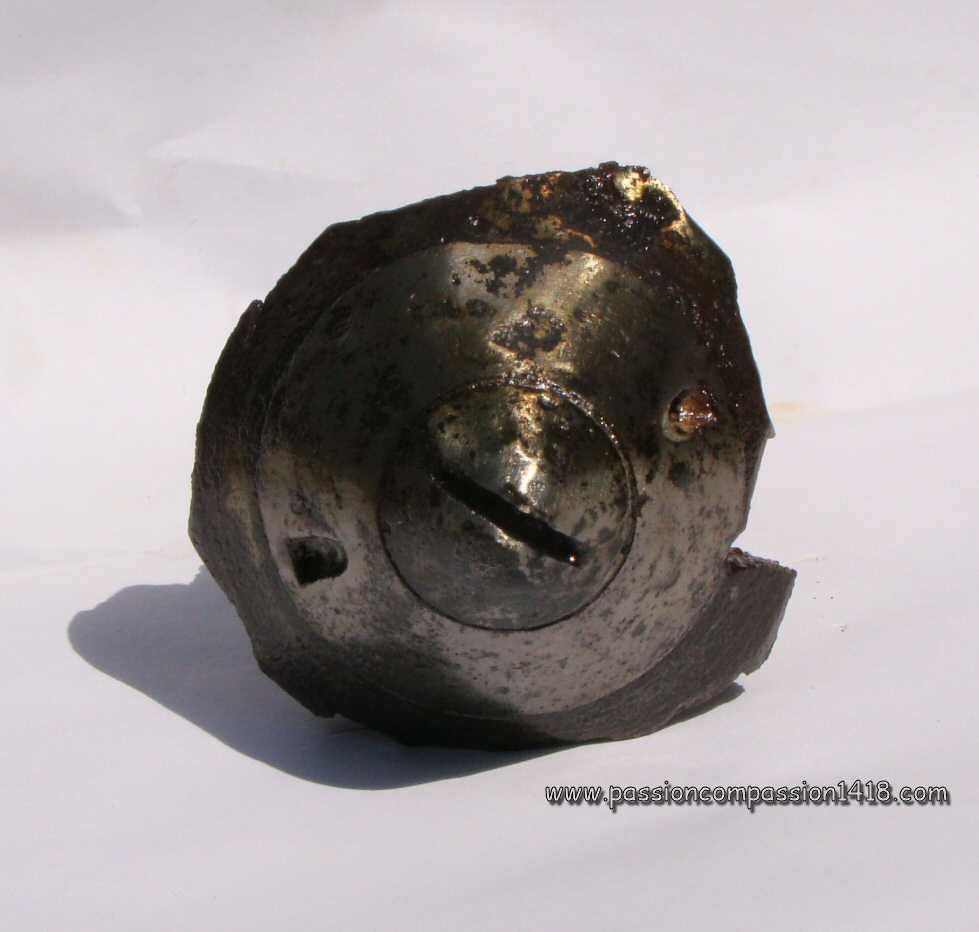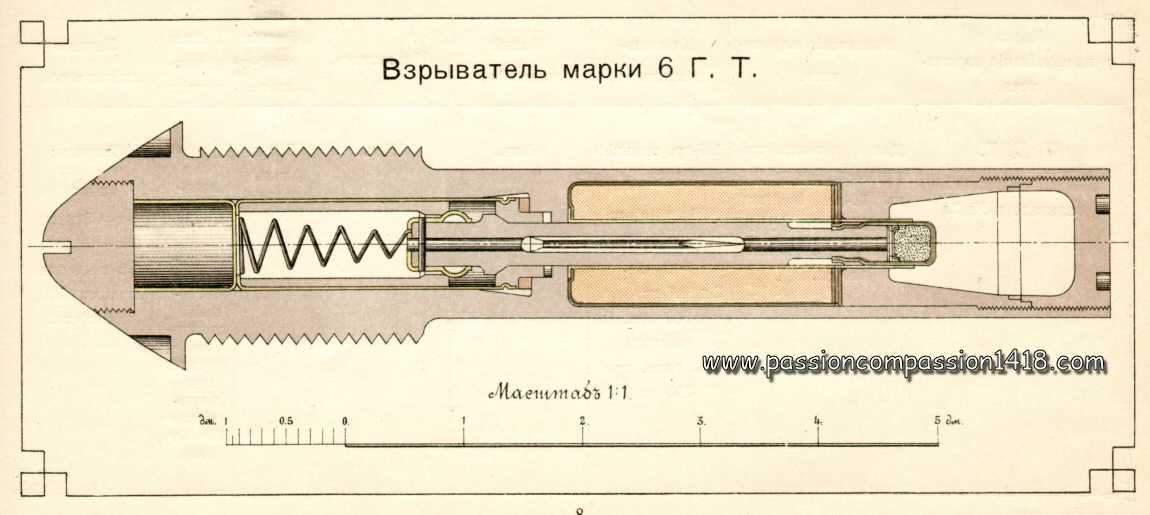|
6 GT Fuze |
||
 |
The other main families of the 'native' Russian percussion system was designed on the basis of a different prociple, but also present in some German fuzes such as the GrZ 96/04, built around a detonator integrated in a median position of the fuze body, and a safe detonation room housing the primer at rest.
This 6 GT type percussion fuze, was composed, from head to tail, with a inertia concussion arming system with locking staple and safety spring, a hollow massive mobile cylinder housing a long static percussion needle, positionned axially through an integrated detonator and bearing at its lower extremity the primer cap that was kept at rest inside the safe detonation room preventing the effects of an unwanted premature triggering.
An interesting fact about the particular fuze shown in the pictures is that this one has been observed on a western front WW1 battlefield, proving the German Army was using captured Russian guns and ammo in France. |
|
Percussion fuze type 6 GT. |
||
 |
 |
|
Percussion fuze type 6 GT. Steel and brass body. No markings visible. |
Percussion fuze type 6 GT. Front view. |
|
 |
||
Percussion fuze type 6 GT. That fuze has been observed in Massiges, Champagne (France). It is certainly a munition shot by the German Army with a Russian gun captured on the eastern front |
||
 |
||
Percussion fuze type 6 GT. Wartime scheme |
||
Return at the top of the page |
||